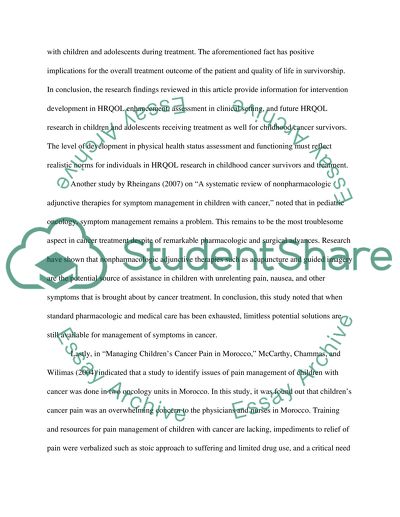Cite this document
(“Pain Management in Pediatric Oncology Essay Example | Topics and Well Written Essays - 1250 words”, n.d.)
Pain Management in Pediatric Oncology Essay Example | Topics and Well Written Essays - 1250 words. Retrieved from https://studentshare.org/health-sciences-medicine/1528969-pain-management-in-pediatric-oncology
Pain Management in Pediatric Oncology Essay Example | Topics and Well Written Essays - 1250 words. Retrieved from https://studentshare.org/health-sciences-medicine/1528969-pain-management-in-pediatric-oncology
(Pain Management in Pediatric Oncology Essay Example | Topics and Well Written Essays - 1250 Words)
Pain Management in Pediatric Oncology Essay Example | Topics and Well Written Essays - 1250 Words. https://studentshare.org/health-sciences-medicine/1528969-pain-management-in-pediatric-oncology.
Pain Management in Pediatric Oncology Essay Example | Topics and Well Written Essays - 1250 Words. https://studentshare.org/health-sciences-medicine/1528969-pain-management-in-pediatric-oncology.
“Pain Management in Pediatric Oncology Essay Example | Topics and Well Written Essays - 1250 Words”, n.d. https://studentshare.org/health-sciences-medicine/1528969-pain-management-in-pediatric-oncology.


